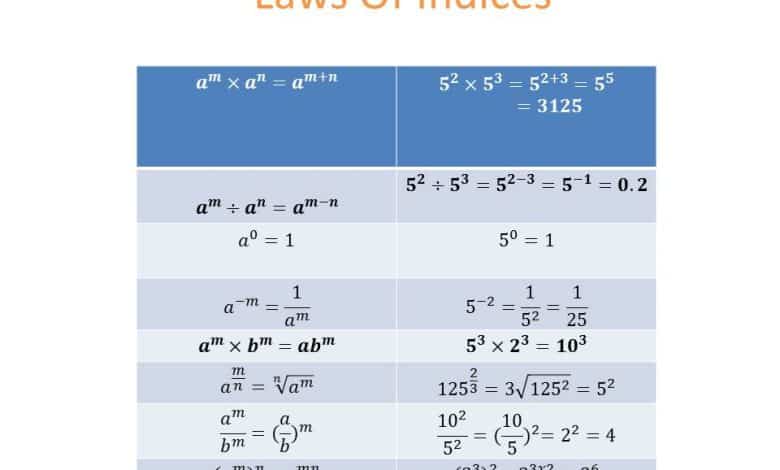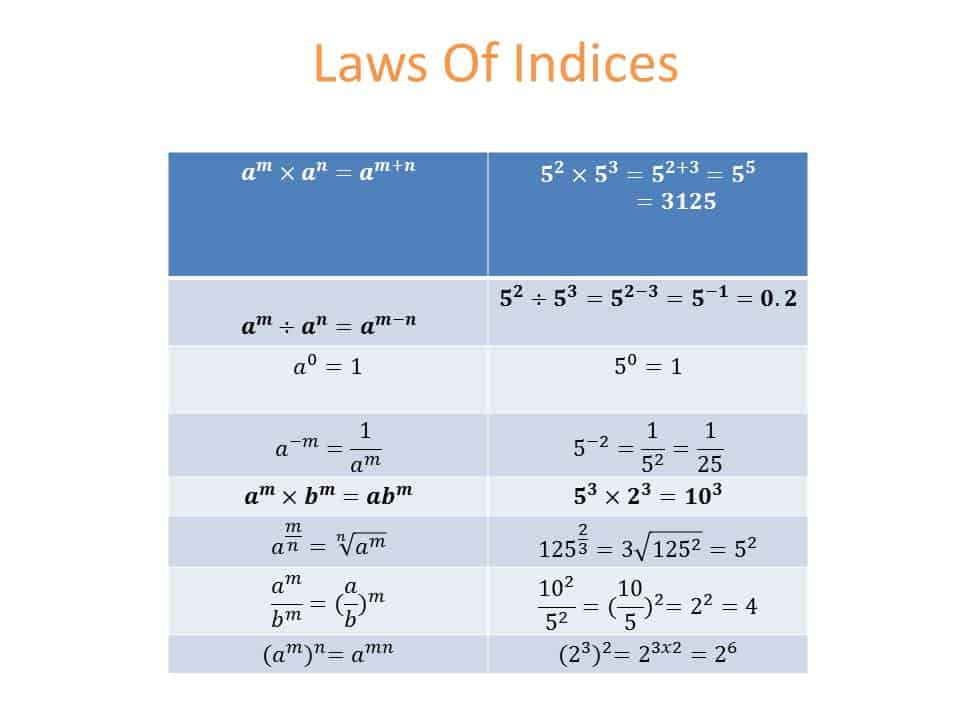The 8 Laws Of Indices In Maths Explained

Index in Maths is the exponent raised to a number. For example, in number 4^2, 2 is the index or power of 4. The plural form of index is indices. Also, the number of the form x^n where x is a real number, x is multiplied by itself n times, i.e., x^n = x*x*x*x*x*——(n times). The number x is called the base, and the superscript n is called the index, power, or exponent.
Index laws are what you have to understand if you want to gain mastery in solving some problems in mathematics.
Read: Steps to get a good grade in math
Laws of Indices

1st law
Any base variable raised to zero (0) is one (1), i.e. A0 = 1. For example, 20 = 1
2nd Law
If a base variable is raised to a negative number, then it will be equal to the inverse of the base variable raised to a positive number, i.e.
A-m = 1/Am
3rd Law
If a base number (which is a fraction) is raised to a number (m), then it will be equal to the numerator raised to the number (m) and the denominator raised to the same number (m), i.e.
(A/B)m = Am/Bm
Example, (2/3)2 = 22/32 = 4/9
4th Law
If a base number is raised to a number (m) and multiply a base number of the same value raised to a number (n), then it will be equal to the base number raised to the sum of the exponents (m + n) i.e.
Am X An = Am+n
Example, y5 x y4 = y5+4 = y9
5th Law
If a base number is raised to a number (m) and is divided by a base number of the same value raised to a number (n), then it will be equal to the base number raised to the difference between the exponents (m – n) i.e.
Am -:- An = Am-n
Example, 54 -:- 52 = 54-2 = 52 = 5 x 5 = 25
6th Law
If a base variable is raised to a number (which is a fraction (x/y)), then it will be equal to the yth root of the base number raised to x, i.e.
Ax/y = y√Ax
Example, 272/3 = 3√272 = 32 = 9
7th Law
If a base variable is raised to a number (n) and the entire number raised to power (m), then it is equal to the base number raised to the multiplication of the two exponents (m*n), i.e.
(Am)n = Amn
Example, (33)2 = 33*2 = 36 = 3*3*3*3*3*3 = 729
8th Law
When two base variables with different bases but the same indices are multiplied together, we have to multiply the two bases and raise the same index to multiplied variables, i.e.
An x Bn = (A.B)n
Example, 32 x 22 = (3*2)2 = 62 = 36
If you have any questions concerning the laws of indices, you can drop a comment in the box below.
